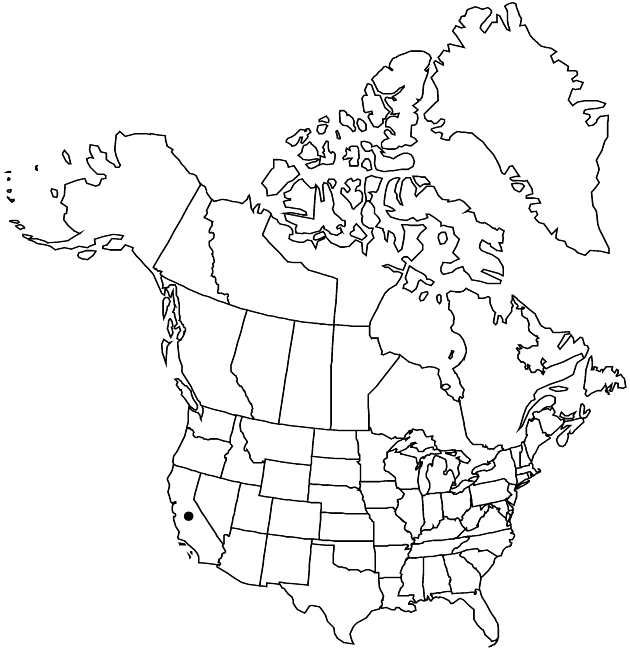Cirsium fontinale var. campylon
Phytologia 73: 313. 1992.
Common names: Mt. Hamilton thistle
EndemicConservation concern
Basionym: Cirsium campylon H. Sharsmith Madroño 5: 85, fig. 1. 1939
Revision as of 19:48, 5 November 2020 by imported>Volume Importer
Basal leaves: longer spines 4–15 mm, distal faces equally glandular and tomentose. Cauline leaves: longer spines 10–18 mm. Distalmost stem bracts typically separated from heads. Phyllaries 65–85, 25–35 of them reflexed; apical spines 3–6 mm; marginal spines usually absent. Cypselae 3.4–4.1 mm. 2n = 34.
Phenology: Flowering spring–summer (Apr–Aug).
Habitat: Serpentine seeps in areas of chaparral, valley grasslands, foothill woodlands
Elevation: 300–800 m
Discussion
Of conservation concern.
Variety campylon is endemic to the Mt. Hamilton Range in Alameda, Santa Clara, and Stanislaus counties.
Selected References
None.
Lower Taxa
None.
